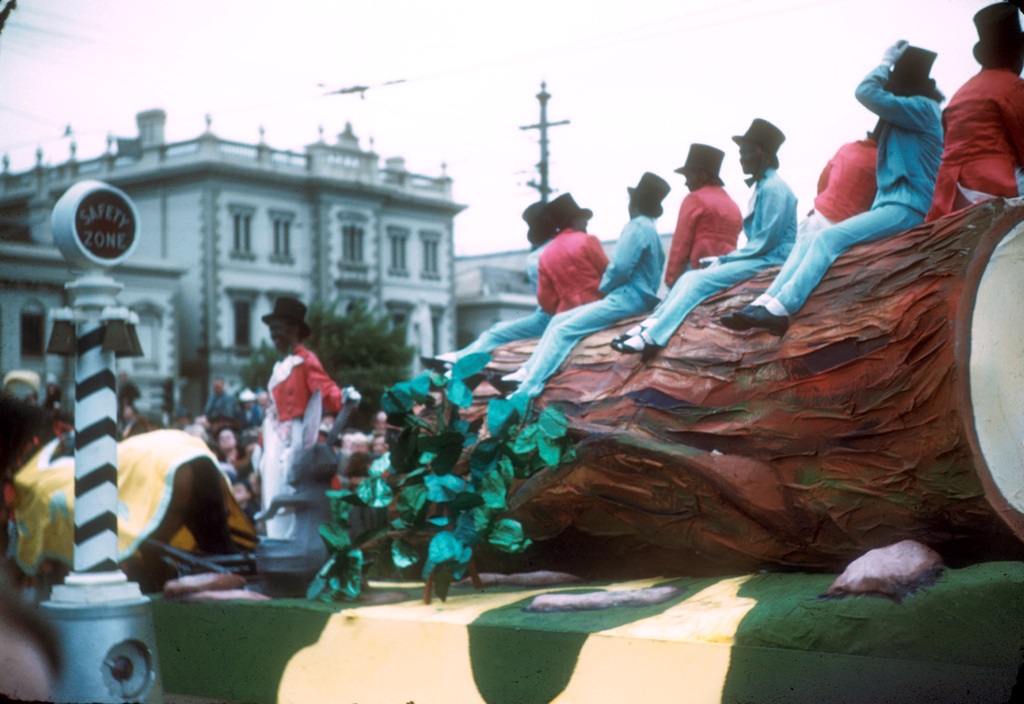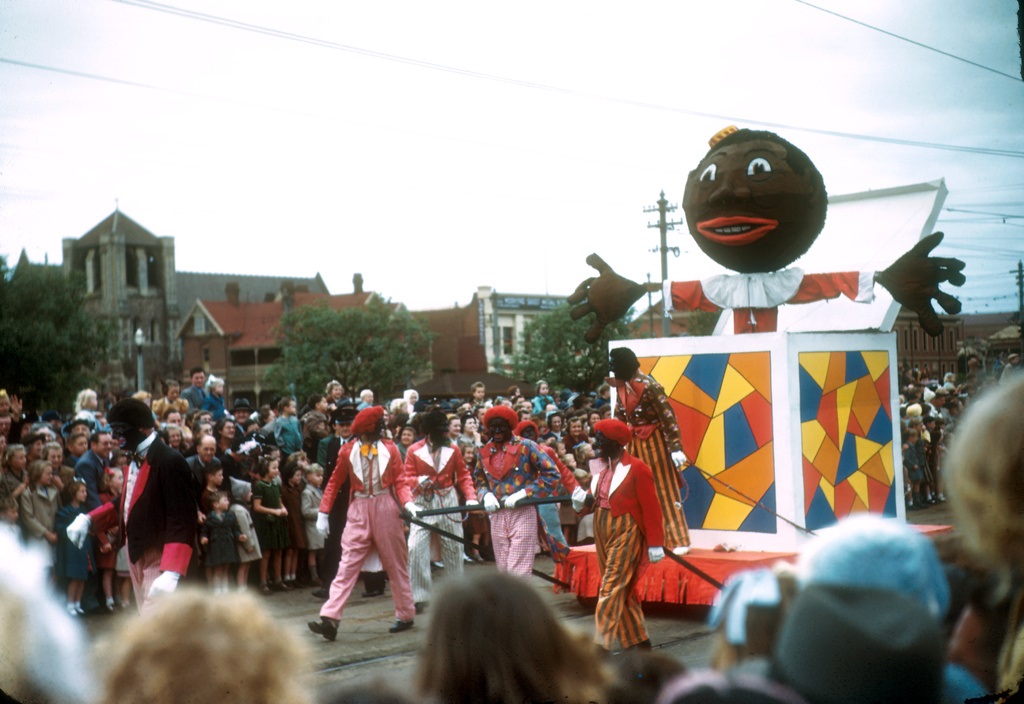First held in 1933, the Adelaide Christmas Pageant was founded by the then-owner of John Martin’s Sir Edward Hayward as a welcome injection of festive spirit in a city gripped by the Great Depression.
It was, also, a good way to get people back into his department store. Signalling the beginning of the Christmas retail season, each year this 86-year-old institution culminates in the installation of Father Christmas atop his festive, toy department-adjacent throne in the Magic Cave.
With a float-count now pushing 90 entries, the parade’s content has long looked beyond its initial yuletide remit, seeking to entertain children with a variety of characters from fairytales and children’s literature. Today, the parade features familiar characters like Little Red Riding Hood and Alice In Wonderland alongside less traditional inclusions such as Wang Wang and Funi, Fergus The North Pole Fire Engine and Penguins R Koool.
But as early as 1935, the pageant’s mix of Noah’s Ark, Mickey and Minnie Mouse, Old King Cole and Cinderella was joined by a float titled the Ten Little N***** Boys. A variation on the 19th century North American Ten Little Indians children’s rhyme, by the 1860s Ten Little N****** was on its way to becoming a staple of the United States’ then-common minstrelsy shows.
But even by the mid-20th century, the troubling racial implications of the song had seen its language revised in other parts of the world. A 1939 Agatha Christie whodunnit that borrowed the title was hastily rechristened And Then There Were None for American audiences, while Iceland had its own heated public debate over the publication of an adaption of the story all the way back in 1922.

State Library of South Australia B 62287/2
All of which makes the decision by Adelaide pageant organisers to add the float a symptom of the naivety, ignorance, or indifference of mid-century South Australia – or perhaps a combination of all three. The float even appears to have later incorporated other since-discredited elements of American pop culture, with the State Library of South Australia noting that one of the photos in its collection is accompanied by the caption “Barb makes a good Uncle Remus”. This comment refers to the fictional character first introduced by white American author Joel Chandler Harris’ in the 1880s, who later appeared in Walt Disney’s 1946 film Song Of The South which was released just a few years before Barb’s photo was taken.
While we can trace the lineage of these references, less easy to explain is the pageant’s decision to also incorporate blackface into its Jack-In-The-Box float. Except, perhaps, that it was a popular form of amusement.

State Library of South Australia B 62287/11
But why bring this up now? Pointing out that society’s values have changed since the 1960s, or the 1860s, is not a profound observation. It’s the reason Song of the South probably won’t get a run when Disney launches its Disney+ streaming service this month. It’s why University of Adelaide students aren’t painting their bodies in a crude impression of First Nations people on the steps of Parliament House as a start-of-term prank (as they did in January 1951).
Often when people critique the way blackface and other racist tropes resurface in contemporary Australia (and in a rare coup we seem to have weathered this year’s Halloween without a notable Australian blackface controversy) they are rebuffed with the argument that the practice does not have a comparable history, context or understanding as America.
As Allan Clarke documented for Buzzfeed, this is quite inaccurate. But it’s how Hey Hey It’s Saturday can put a blackface routine on television in and plead ignorance, or basketball player Liz Cambage can be unfairly portrayed as the antagonist for taking issue with an Opals team mate dressing as Kanye West.
These images of the Christmas Pageant show this is simply not the case – we’ve been doing this stuff for a long time.
But there’s something uniquely confronting about these clearly racist displays sitting at the heart of the biggest children’s event of the South Australian calendar. These costumes – and the dehumanisastion, exclusion and ‘othering’ they embody – were for many years a relatively uncontroversial part of the childhoods of generations of South Australians. It’s no wonder many react fiercely to a rise of “political correctness” attacking their right to own ‘golliwogs’, or dress up for a costume party – their childhood memories are filled with huge, overwhelmingly white crowds literally cheering these very tropes on.
Although the instinct of the suburban nana or kitsch souvenir shop owner to cling to their hand-crocheted golliwog is often downplayed by some as a harmless tradition, these Christmas Pageant images are jarring, and shocking. But this is the environment in which the kinds of ignorance and indifference we see today are rooted, as is the denial that Australia is a country with an inherently racist past.
If we’re still unpicking our grip on the racist nursery rhymes and caricatures of the 20th century, what about the myriad other lingering toxic attitudes and structural inequalities that are harder to identify than a toy or a painted face?
Because as these photos show, at the height of the White Australia policy and Stolen Generation-era child removal, we were literally parading racist caricatures on our streets – like it was Christmas.
Walter is a writer and editor living on Kaurna Country.
Get the latest from The Adelaide Review in your inbox
Get the latest from The Adelaide Review in your inbox